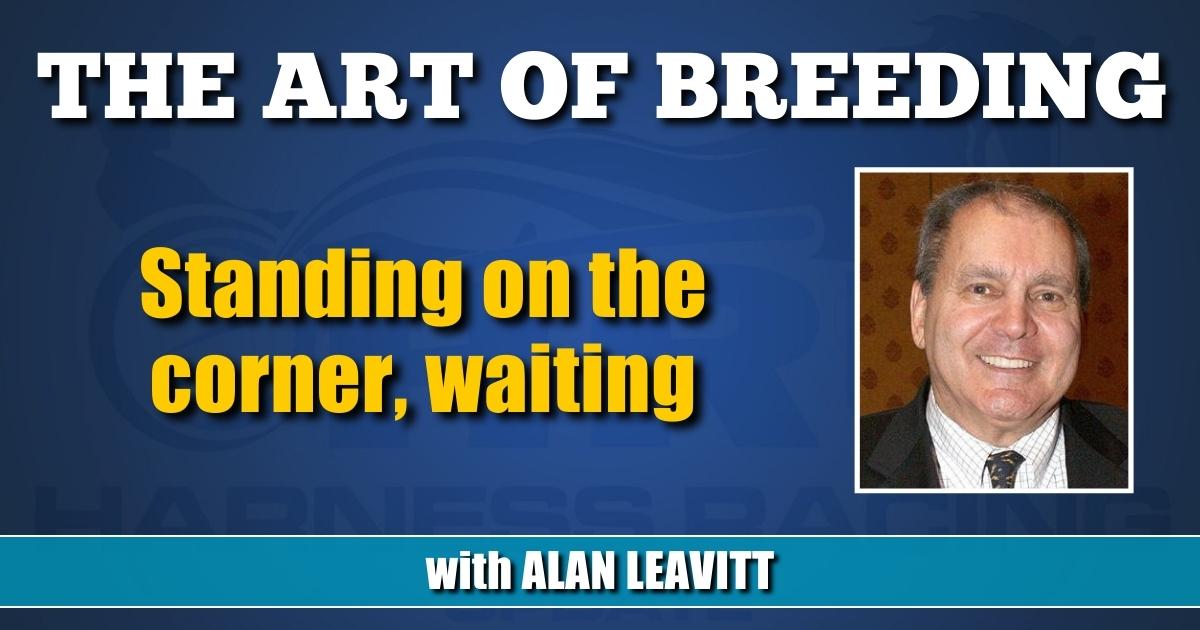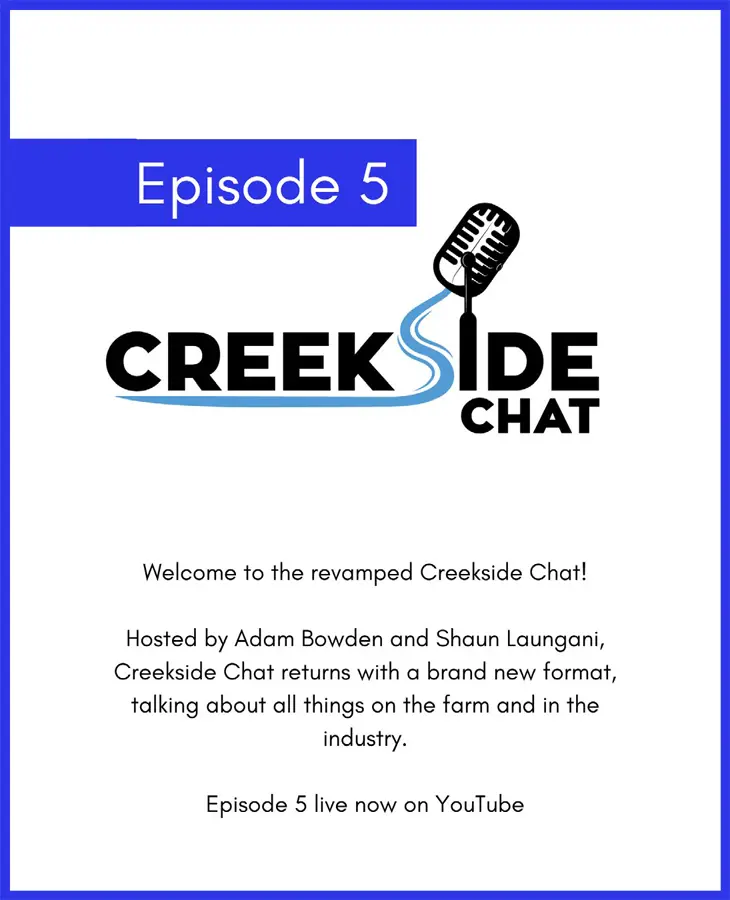
Standing on the corner, waiting
by Alan Leavitt
OnGait, the online auction house, has always seemed like a good idea to me in this age and time when so much commerce is done over the Internet. Last week, I had my first personal dealing with OnGait, and I was impressed.
OnGait is the creation of Eric Cherry, for a long time now one of the most inventive minds in our business. The day-to-day running of the business is handled by Maurice Chodash, and a nicer guy you’ll never meet. As it happened, there was an interesting pacing mare, Western Heat, up for auction.
She was 18 years old, open, but her 3-year-old filly had won over $300,000 this year, and she had just sold an $80,000 yearling at Harrisburg. Interesting, no? Or in the words of the late, great horseman Marvin Childs, a true Gambler’s Chance.
Into the bargain, she was a direct descendant of Romola Hanover, probably the most sought after pacing blood there is at the moment.
But my reflexes weren’t fast enough, and she was gone before I could pull the trigger. As they say in certain circles, c’est la guerre. And a long time ago, Lawrence Sheppard told me, there’s another street car every 15 minutes.
On a different note, I’ve just heard about another interesting mare, courtesy of Mr. James Moore, who I believe goes by the nickname, Chip. Mr. Moore is a shrewd operator, as witnessed by the story of his mare NF Happenstance.
For those unfamiliar with the first two initials, they stand for Nandi Farm, the farm operated by Dr. Hurtchen. He was the Godfather of embryo transfers, and one of the most skillful equine reproductive specialists whoever practiced. For those of us lucky enough to know him personally, he was also as good and kind a friend as you could ever hope to have.
RE: NF Happenstance, Mr. Moore raced her at 2, 3, and 4, and then sold her to Bill Weaver when she was a 4-year-old. For those not lucky enough to know Bill Weaver personally, he was a great person. His first trainer was Harold Dancer, Sr., the oldest brother of Stanley and Vernon.
Weaver was wonderfully attentive to Harold as he struggled and finally succumbed to a heart attack. He then sent his racehorses to Vernon Dancer, and again stayed with him until he, too, passed away.
As a breeder, Weaver wrote his name indelibly in the sands of our business when he bred the immortal Valley Victory. His passing has left a void that I doubt will soon be filled.
Weaver bred NF Happenstance to Sebastian K and, after he died, Mr. Moore bought her back and sent her back to the races. From her breeding to Sebastian K, the mare had a filly who was injured and never raced. However, motherhood certainly seemed to improve NF Happenstance because she went back to the races for Mr. Moore and won $365,000 at 7 and 8, including a Breeders Crown elimination.
Since being retired, again, NF Happenstance now has a yearling colt by Father Patrick, a weanling colt by Cantab Hall, and is in foal to Six Pack. The question is, where to go next with her?
NF Happenstance is by S.J.’s Caviar, out of Moira Hall, by Conway Hall. Obviously this kid had a little to do with her pedigree.
The first thought that strikes one about her pedigree is how old it is. Moira Hall is a foal of 2001, and she’s still going strong with 11 foals so far, including a 2-year-old this year. She’s hit twice, with NF Happenstance the winner of $661,321 and Morairtime with $369,917. (It took me a minute to interpret that mare’s name as More Air Time. Clever, indeed.)
Neither S.J.’s Caviar or Airzoom Lindy are dominant sires. To explain how they could sire such good horses from a fairly nondescript mare, with all due deference to her breeder, once again you have to look at the genetic range of every horse as a deck of cards, running from two to ace.
The best producers, stallions or mares, have a deck that probably starts with a 10, and goes up from there. Those cards represent the speed gene every standardbred horse carries, so a 10 for a trotter translates into a speed of 1:52-1:53.
In the case of these two obviously fast horses, one can assume that at the moment of conception, both the sire and the dam brought together the highest cards in their respective decks, say a 10 and a jack. That happens randomly, and the chances of it recurring, i.e. if you were to keep breeding that horse to that mare, are slight.
For the record, that genetic make-up is technically the horse’s genotype. It is invisible, and bears no similarity or connection to the “visible horse”, or its racetrack performance. That’s the reason a mare’s ability on the track says absolutely nothing about her ability to reproduce fast horses. As every savvy breeder knows, the best and only clue to her reproductive ability lies in her pedigree, where you’re looking for a history of speed production on the Tail-Mare side in every generation, ideally.
Saying that, I know, will not change the fact that big prices will be paid for future broodmares with great racing credentials. Or that the same kind of big money will be paid for at least the first two foals of the same kind of mare with a flashy history on the track.
If I were to ignore my own beliefs and point to one racing characteristic of a mare that might mean something about her ability to produce fast horses, it would be high speed at 2. If you must insist on looking at a mare’s racing history as a guide to her reproductive ability, look at her ability at 2.
But while this may be helpful, it is not one tenth as important as the strength of her pedigree.
Figuring out the sire potential of a stallion is a totally different kettle of fish. (If you like fish, try McDonald’s Fried Fish sandwich. I recommend it.) With stallions, the pedigree means nothing. Every stallion is a separate entity unto itself, and how he’s bred is irrelevant. The best clue to a horse’s future in the stud is his racetrack ability at 2.
That’s a belief that I share with a much higher authority, namely the greatest thoroughbred breeder of all time, Federico Tesio. Even that won’t tell you the whole future, by any means, but it gives one something to go on.
Here again, I give the example of the two full brothers, Muscle Mass and Muscle Massive. Muscle Mass was a top colt at 2, winning more than $200,000. At 3, he did nothing. Today he’s one of the best trotting sires standing anywhere.
His full brother, Muscle Massive, was mediocre at 2, but won the Hambletonian at 3. In the stud, I’m not calling him a dud, by any means, but he is on his second farm.
That’s it for the breeding stuff for now, but I want to go back 50 years to the day Mr. Sheppard told me, there’s another street car every 15 minutes. Maybe so, but I’m still standing on the corner by myself, hoping another mare like Western Heat will come by.












